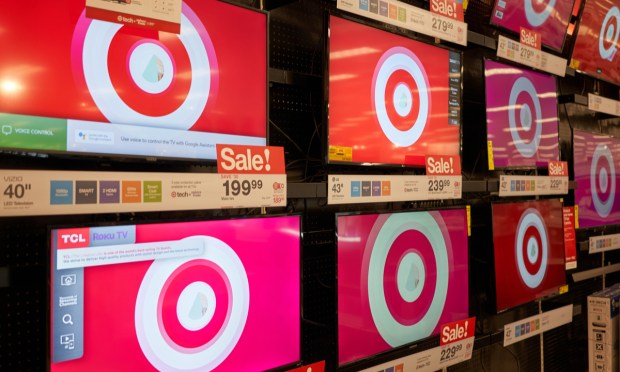
Just like the resurgence of physical retail — retail media ads are now novel once again, especially in-store.
Or maybe they’re keeping their novelty as they’ve become a topic of conversation in the retail industry about what’s producing results. After all, it’s been compelling enough for retail giants like Walmart and Target to tap into the scheme and ultimately tap into an industry that is now poised to reach $100 billion by 2026.
In fact, back in August, PYMNTS highlighted that both retail giants were working towards expanding their market share in the realm of in-store advertising.
Read more: Walmart and Kroger Aim to Increase Market Share as In-Store Advertising Gains Momentum
This week, at NRF 2024, the National Retail Federation’s annual trade show, Walmart reported that it had a wider reach than the largest TV network and that retailers were increasingly allocating their marketing budgets to in-store uses.
And according to Ryan Mayward, senior vice president of retail media sales at Walmart Connect, Walmart is exploring new advertising approaches within its stores. This includes advertising on TV screens located in the electronics section, screens in the deli and bakery sections, and on self-checkout screens.
Supporting this idea, Jonathan Lustig, the head of revenue at Walgreens Advertising Group, “every Walgreens store becomes a distribution center.”
Now companies like Microsoft are turning to artificial intelligence (AI) to empower individuals in crafting retail media content. As per reports, the Retail Media Creative Studio, integrated with Microsoft’s PromoteIQ platform, uses AI for swift and personalized development of banner ads, with an anticipated early preview release in 2024.
Developed based on insights from retail partners, the Retail Media Creative Studio addresses specific challenges in retail advertising. A feature, as reported, is its ability to transform product URLs into designed banner ads through content generation.
Moreover, the creative studio can generate ads that align with a retailer’s branding guidelines with input, thanks to its user-friendly interface.
In May, PYMNTS reported that, with the momentum behind retail media networks and the promising results reported by retailers including Dollar General and Walmart, many brands and retailers leveraged content creators and influencers to elevate their ads to the next level.
The decision came after a 2023 consumer study conducted by influencer marketing platform LTK, which revealed that Gen Z and millennials place more trust in creators than in ads and celebrities. The study also discovered that all age groups are now making online purchases through creators’ affiliate links, with Gen Z and millennials leading at 75% and 67%, respectively. Additionally, LTK reinforced the notion that consumers are influenced to shop based on what they observe on social media.
These observations come after the realization that the influencer marketing sector reached $16.4 billion in 2022, with reports indicating that 67% of brands and retailers intended to increase their influencer marketing spending in 2023. Furthermore, 23% of these businesses planned to allocate over 40% of their total marketing budget to influencer marketing.
Consequently, brands and retailers are wholeheartedly adopting the trend and are a more measured strategy in selecting influencers to promote them. Instead of opting for the most talked-about influencer or celebrity, businesses are aiming to collaborate with creators who align with their values, with the objective of establishing a more authentic connection between the brand, influencer and audience.
Read more: Influencers Help Brands Drive Sales Through Retail Media Networks